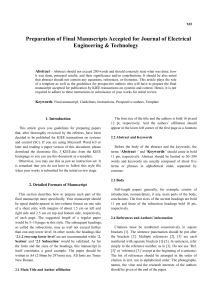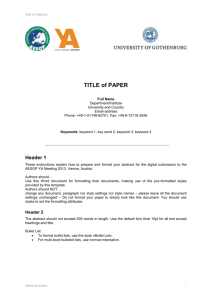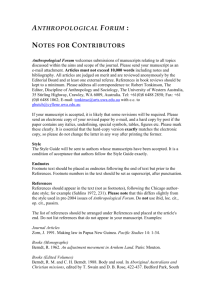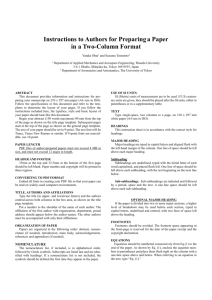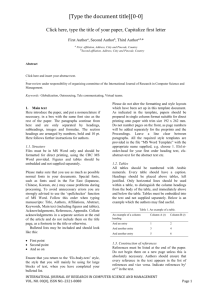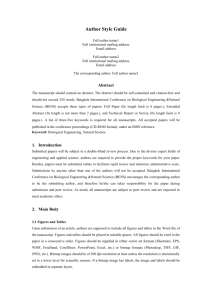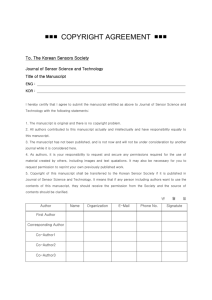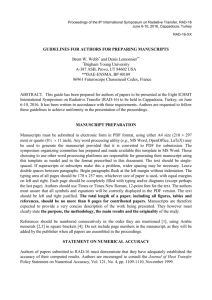ManuscriptTemplale
advertisement
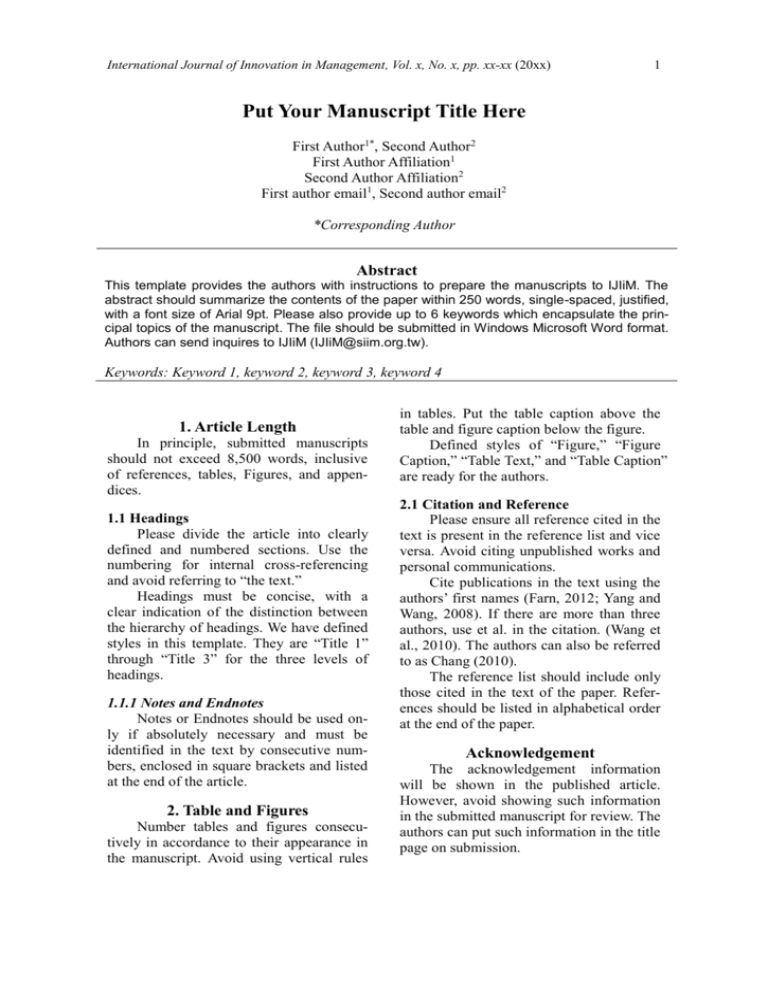
International Journal of Innovation in Management, Vol. x, No. x, pp. xx-xx (20xx) 1 Put Your Manuscript Title Here First Author1*, Second Author2 First Author Affiliation1 Second Author Affiliation2 First author email1, Second author email2 *Corresponding Author Abstract This template provides the authors with instructions to prepare the manuscripts to IJIiM. The abstract should summarize the contents of the paper within 250 words, single-spaced, justified, with a font size of Arial 9pt. Please also provide up to 6 keywords which encapsulate the principal topics of the manuscript. The file should be submitted in Windows Microsoft Word format. Authors can send inquires to IJIiM (IJIiM@siim.org.tw). Keywords: Keyword 1, keyword 2, keyword 3, keyword 4 1. Article Length In principle, submitted manuscripts should not exceed 8,500 words, inclusive of references, tables, Figures, and appendices. 1.1 Headings Please divide the article into clearly defined and numbered sections. Use the numbering for internal cross-referencing and avoid referring to “the text.” Headings must be concise, with a clear indication of the distinction between the hierarchy of headings. We have defined styles in this template. They are “Title 1” through “Title 3” for the three levels of headings. 1.1.1 Notes and Endnotes Notes or Endnotes should be used only if absolutely necessary and must be identified in the text by consecutive numbers, enclosed in square brackets and listed at the end of the article. 2. Table and Figures Number tables and figures consecutively in accordance to their appearance in the manuscript. Avoid using vertical rules in tables. Put the table caption above the table and figure caption below the figure. Defined styles of “Figure,” “Figure Caption,” “Table Text,” and “Table Caption” are ready for the authors. 2.1 Citation and Reference Please ensure all reference cited in the text is present in the reference list and vice versa. Avoid citing unpublished works and personal communications. Cite publications in the text using the authors’ first names (Farn, 2012; Yang and Wang, 2008). If there are more than three authors, use et al. in the citation. (Wang et al., 2010). The authors can also be referred to as Chang (2010). The reference list should include only those cited in the text of the paper. References should be listed in alphabetical order at the end of the paper. Acknowledgement The acknowledgement information will be shown in the published article. However, avoid showing such information in the submitted manuscript for review. The authors can put such information in the title page on submission. 2 International Journal of Innovation in Management, Vol. x, No. x (20xx) References Arndt, J. (1967). Role of product-related conversations in the diffusion of a new product. Journal of Marketing Research, 4(1), 291-295. Mowday, R. T., Porter, L. W., & Street, R. M. (1982). Employee-Organization Linkages: The Psychology of Commitment. New York, NY: Academic Press. O’Neil, J. M., & Egan, J. (1992). Men’s and women’s gender role journeys: Metaphor for healing, transition, and transformation. In B. R. Wainrib (Ed.), Gender Issues across the Life Cycle (pp. 107-123). New York, NY: Springer. Kearns, G. S., & Lederer, A. L. (2001). Strategic IT alignment: A model for competitive advantage. Proceedings of the International Conference on Information Systems (pp. 1-12). New Orleans, Louisiana, USA. Crowston, K. (1994). A taxonomy of organizational dependencies and coordination mechanisms. Working Paper Series #174, MIT Center for Coordination Science, available at: http://ccs.mit.edu/papers/CCSWP174. html. Accessed November 20, 2011.



